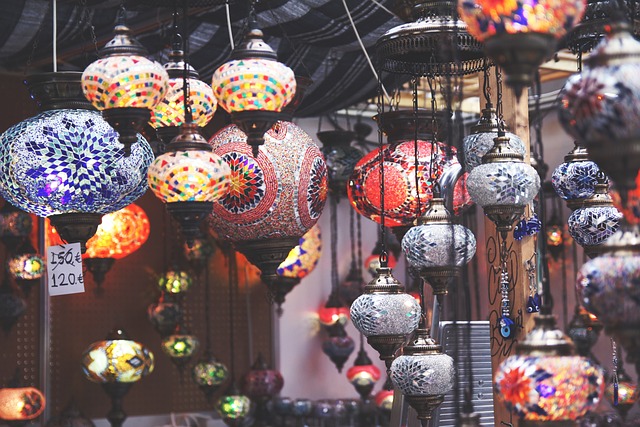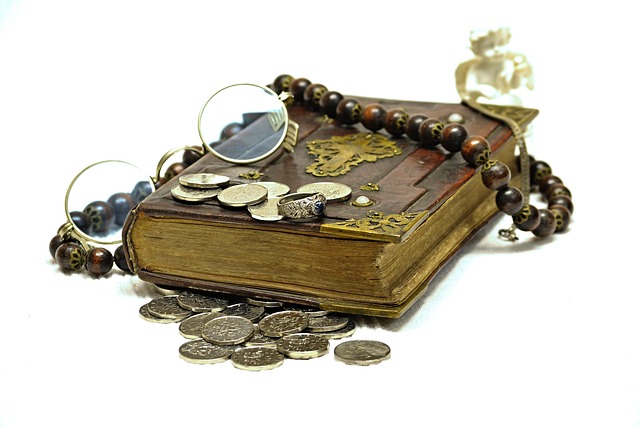Accurate translation of UK art catalogs and exhibition brochures is crucial for international appreciation. Professional services go beyond basic translations, adapting content for different cultures while preserving artistic narratives. This ensures global audiences connect deeply with artworks, enhancing user experiences and the institution's profile. When translating these materials, prioritize cultural sensitivity, native-speaking translators specializing in artistic terminology, and high-quality visuals to improve comprehension. The goal is to capture the essence of exhibitions, making them accessible and appealing worldwide through UK Art Catalogs and Exhibition Brochures Translation Services.
In today’s global art scene, translating UK art catalogs and exhibition brochures for international audiences is essential. Accurate translation ensures that art enthusiasts worldwide can fully engage with cultural offerings. This article explores key aspects of this specialized service, including unique challenges in UK art literature translation, best practices for exhibition brochures, cultural relevance, the role of native speakers, and measuring translation success. Discover how top-tier UK Art Catalogs and Exhibition Brochures Translation Services enhance accessibility and appreciation across borders.
- Understanding the Importance of Accurate Translation for Art Catalogs
- The Unique Challenges in Translating UK Art Literature
- Key Considerations When Choosing a Translation Service
- Best Practices for Effective Translation of Exhibition Brochures
- Techniques to Ensure Cultural Relevance and Sensitivity
- The Role of Native Speakers in Art Catalog Translation
- Measuring Success: Evaluating the Quality of Translated Art Materials
Understanding the Importance of Accurate Translation for Art Catalogs

In the realm of UK art catalogs and exhibition brochures, accurate translation is more than just a service—it’s a gateway to global appreciation and understanding. When an art institution or gallery creates a catalog, it aims to share not just artworks but also their stories, artistic significance, and cultural context. A precise and faithful translation ensures that these narratives resonate with international audiences, fostering deeper connections and greater interest in the exhibited pieces.
For UK-based art organizations looking to reach global markets, professional translation services are essential. These services go beyond simple word-for-word rendering; they involve cultural adaptation, ensuring that references, idioms, and artistic concepts are conveyed appropriately. This attention to detail not only enhances the overall user experience but also reflects positively on the institution’s commitment to excellence and accessibility in a diverse, international art community.
The Unique Challenges in Translating UK Art Literature

Translating UK art literature, specifically catalogs and exhibition brochures, presents a unique set of challenges. One of the primary difficulties lies in capturing the nuanced cultural references and artistic terminology that are deeply ingrained in the English language. Art is a universal language, yet each country’s interpretation and vocabulary can significantly vary, making precise translation essential to convey the intended artistic message accurately.
UK art literature often draws from a rich history and diverse artistic traditions, requiring translators to have an in-depth understanding of both the source text and the target culture. The subtle differences in idioms, proverbs, and even color associations can alter the original intent and impact of the artwork described. Professional translation services specializing in UK art catalogs and exhibition brochures are crucial to navigating these complexities, ensuring that international audiences receive a clear and authentic representation of British artistic offerings.
Key Considerations When Choosing a Translation Service

When selecting a translation service for UK art catalogs and exhibition brochures, several key considerations come into play. Firstly, ensure the provider has extensive experience in translating art-related content, as this field requires a deep understanding of artistic terminology and concepts. The ability to capture the essence and intent behind each piece is vital to conveying the original message accurately.
Secondly, look for native speakers or translators with a strong cultural background in both the source and target languages. This ensures that not only is the text translated correctly but also that it resonates with international audiences, taking into account subtle cultural nuances. Reputation and past client feedback are essential; choose a service with a proven track record of high-quality work, especially when dealing with visually rich art catalogs where precision and aesthetics matter.
Best Practices for Effective Translation of Exhibition Brochures

When translating UK art catalogs and exhibition brochures for international audiences, precision and cultural sensitivity are paramount. Key best practices include collaborating with native-speaking translators who have a keen eye for detail and an understanding of artistic terminology. This ensures accuracy in conveying complex concepts and terms specific to the art world.
Additionally, leveraging professional translation software and utilizing industry-specific glossaries enhances consistency throughout the document. Incorporating visual elements like high-quality images alongside the translated text aids comprehension, especially for non-native speakers. Remember, effective translation goes beyond words; it captures the essence of the exhibition, making it accessible and appealing to a global audience.
Techniques to Ensure Cultural Relevance and Sensitivity

When translating UK art catalogs and exhibition brochures for international audiences, cultural relevance and sensitivity are paramount. It’s not just about word-for-word translations; it’s about capturing the essence and nuances that resonate with diverse global markets. Expert translators should have a deep understanding of both the source culture and the target audience. This involves researching artistic and historical contexts specific to each region, ensuring that references, metaphors, and visual descriptions land appropriately. For instance, using local idioms or cultural symbols can make the content more relatable, enhancing reader engagement.
Moreover, visual elements like images and layouts require careful consideration. What may seem aesthetically pleasing in one culture might need adjustments for another. Translation services should also include a review process that involves native speakers from the target markets to catch any cultural missteps. This ensures not only accurate translations but also culturally sensitive ones, fostering meaningful connections between UK art and its global audience.
The Role of Native Speakers in Art Catalog Translation

When translating UK art catalogs and exhibition brochures for international audiences, the involvement of native speakers is paramount. These translators bring not only linguistic proficiency but also a deep understanding of the cultural nuances specific to their target languages. They ensure that the translated content accurately conveys the artistic intent and aesthetic appeal of the original work, maintaining the essence of the UK art scene for global readers.
Native speakers are crucial in capturing subtle references, idiomatic expressions, and regional jargon that might otherwise be lost in translation. They can also help adapt marketing and promotional materials to resonate with different cultural backgrounds, enhancing the overall impact of the catalog or brochure. This level of localization is essential for reaching and engaging international audiences effectively, ensuring your art from the UK finds its appreciation worldwide.
Measuring Success: Evaluating the Quality of Translated Art Materials

Evaluating the success of translating art materials for international audiences is crucial, especially when offering services like UK Art Catalogs and Exhibition Brochure Translation. The quality of translation goes beyond simple word-for-word substitution; it involves capturing the essence, context, and artistic intent behind each piece. Professional translators skilled in both language pairs and art history are essential to ensuring accuracy and cultural relevance.
Metrics for assessing translation quality can include consistency with brand voice, preservation of artistic concepts, and understanding of target audience preferences. For example, a well-translated UK art catalog should not only accurately describe artworks but also resonate with international collectors and enthusiasts, fostering their appreciation and interest in the featured pieces.
Accurately translating UK art catalogs and exhibition brochures for international audiences is vital to broadening cultural exchange and artistic appreciation. By navigating unique challenges, such as terminological specificity and cultural nuances, and utilizing best practices including native speaker involvement, the translation process can elevate the global reach of these essential resources. Choosing a reputable translation service that prioritizes cultural relevance and sensitivity ensures that art from the UK continues to resonate and inspire diverse audiences worldwide.



